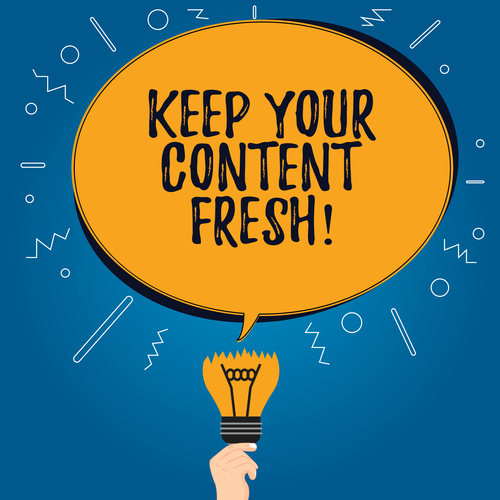Content Marketing promotion best practices should include the distribution of content through a variety of media channels. Content Marketing promotion best practices should be focused on creating less and promoting more. Get people to message who need it most. 47% of B2B buyers consume 3-5 pieces of content prior to engaging with a salesperson. Content promotion and success. Drive website traffic, Improve audience engagement, and aid buyers with purchase decisions. Organic content promotion is designed to increase the visibility of your content and its effectiveness of your marketing campaigns without spending money. Organic promotion channels through search engine optimization, email marketing, social media, live promotions (events or networks), influencer networks, and word of mouth. Increased brand authority. The paid content promotion allows you to promote your content to a highly-specific audience for search engine ads (Google, Yahoo, Bing) and social media ads (Facebook, Linkedin, Twitter, and Instagram). Develop highly targeted audiences. Need a budget for results. Start with a small budget. Promote well-performing content for paid and organic. The result of paid promotion increasing the reach of your content, attracting new audience members and prospects, and helping leads make better decisions about your business.

Content Marketing promotion best practices: Create a content promotion calendar. Use segmentation, Customize messaging for each channel, experiment and optimize, and analyze your results. Creating a custom message for each channel: set the tone, communicate the value, match the distribution channel. The tone is the attitude of your message/feeling. Define two to three benefits someone would gain from your piece of content. Experimentation is a great way to learn how to deliver your content to your audience. Experiment with message used to promote content, distribution channel, time of day, the day of the week, paid versus organic promotion. Optimization is used to achieve the best possible outcome for your promotion plan.
Key Areas to Optimize Content Marketing promotion best practices: reach, engagement, and conversion. Reach is used to measure the size of your potential audience. How to optimize for reach: include a link in your email signature, share content on social media, connect with industry influencers, always tell new people about your content. Optimize for engagements by considering how a user is going to engage with your content, including relevant action words, make adjustments based on the platform being used, and be patient. Optimize for conversions by linking to a landing page for all of your promotional efforts and use strong calls-to-action. Analyze the performance of your promotions’ channels, explore each channel individually, and identify the next steps that you can take based on the new insights.
You can better build your buyer personas with social media data. Social Media Marketing Personas. 55 Questions to ask when developing better social media personas.
Find if your marketing efforts are driving the needle in sales. Discover the insights and determine where to go next. Document and report on progress for future use cases. Address basic questions and new developments. Tracking and measuring content areas of focus: Brand Awareness, Engagement, Lead Generation, customer conversion and sales, customer loyalty and retention, website performance.
Initiative for the year: Quantify and measure her content marketing efforts.
Plan: Run six content marketing measurement campaigns during the year, each targeted at measuring and analyzing content effectiveness.
- Metric = brand awareness; goal: Quantifying her content efforts’ impact on brand awareness. Smart goal: Boost brand awareness in the first half of 2018 by increasing the number of recommending thought leaders from 3-10.\
- Metric = Engagement measures not just who’s seeing your content but who’s interacting with it. These engagement signals offer you feedback to determine the most popular and effective pieces, topics, channels, and formats. Smart goal = Increase the company’s organic reach on Facebook by 150% by the end of 2018.
- Metric = lead generation. How many leads did you generate and where are they in your funnel. Did they consume content, subscriber, able to qualify from lead scoring or lifecycle stages? What is the ratio of MQLs to SQLS. What activities come to lead, cost per SQL/MQL. Smart goal: Focus on using content for lead generation and measuring the different impact of various content pieces on the quality and quantity of leads generated by the end of 2018. Use Google urrls builder with utm parameters: website url, campaign source: social media, referral, campaign medium: email, banner, campaign name;
- Metric: Customer conversion and sales. SMART GOAL: Increase customer conversions by 10% based on what she learns in her data analysis by the end of 2018. Attribution modeling is the rule, or set of rules, that determine how credit for sales and conversions is assigned to touch points in conversion paths. Cost of acquisition per sales efforts. The ratio of leads to customers.
- Metric: Customer loyalty and retention. SMART GOAL: Generate 15% more leads to pass over to sales each month who match the profile of the current-high value segment customers by the end of 2018.
- Unique visitors, page views, and which sources are top performers. Metric: website performance. SMART GOAL: Improve website conversion rate of inbound traffic from search engines by 15% by the end of 2018. Increase website visits by selecting ten website pages that are influential in driving sales and update the content on those pages to be high quality, comprehensive, and thorough, all with the intention to drive more engagement. Write a series of blog posts around a certain topic to attempt to increase website traffic and generate more visits to the site from readers of those posts.
Compare your results to the goals you set previously. Group your content into categories based on key similarities and try to draw some conclusions. What are stakeholders at your company looking for when you run campaigns. Once you have a set of metrics for each stakeholder, set yourself up for success by building a template or dashboard that tracks each metric.


